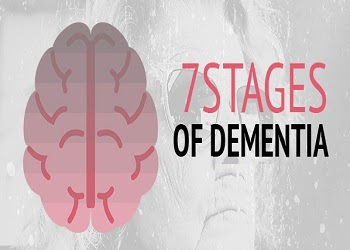The 7 Stages of Dementia
Dementia is not a one-size-fits-all condition. It
presents itself differently in each individual and progresses at different
rates. Where some can stay in a state of mild decline for a long period of
time, others seem to develop every symptom at once.
Understanding each stage
can help make these transitions a little easier on you and your loved one
Stage 1: No
impairment
Everyone starts at stage
1. There are no symptoms of cognitive impairment, mental function is normal.
Stage 2: Very
mild cognitive decline
This stage can vary
between typical age-related memory problems that most seniors face (such as
forgetting certain dates) or could include some of the beginning signs of
Alzheimer’s disease. Some of the side effects that correspond with this stage
include:
·
forgetting everyday phrases
·
forgetting the location of important objects (such as
where your father left his keys)
Stage 3: Mild
cognitive decline
Stage 3 is where
symptoms of dementia or Alzheimer’s can become more noticeable to friends and
family. This stage won’t have major impact on your loved one’s day-to-day life,
but you may notice these signs:
·
Impaired work performance
·
Memory loss/forgetfulness
·
Verbal repetition
·
Poor organization and concentration
·
Trouble with complex tasks/problem solving
·
Difficulty driving
Stage 4: Moderate
cognitive decline
This stage is commonly
defined as early on set Alzheimer’s or dementia. Symptoms of cognitive decline
are apparent and your loved one should be seeing a health care professional.
Signs at this stage include:
·
Social withdrawal
·
Moodiness
·
Non-responsive
·
Trouble with routine tasks
·
Denial
Stage 5: Moderately
severe cognitive decline
Stage 5 is when your
loved one is likely to need help with routine tasks like dressing or bathing,
requiring a home caregiver or a move to a memory care community. Other symptoms include:
·
Confusion/forgetfulness
·
Memory loss of personal details and current events
·
Reduced mental acuity and problem-solving capacity
Stage 6: Severe cognitive decline
Also known as middle
dementia or moderately severe Alzheimer’s disease, this stage will find your
loved one requiring help for Activities of Daily Living (ADL’s) such as using
the bathroom or eating. Your loved one may also experience difficulty sleeping,
increased paranoia or delusions, anxiety, and difficulty recognizing loved
ones.
Stage 7: Very severe cognitive decline
Stage 7 is severe
Alzheimer’s disease or late-stage dementia. Your loved one is unable to care
for themselves, lives with severe motor and communication impairment, and may
lose the ability to speak or walk.





